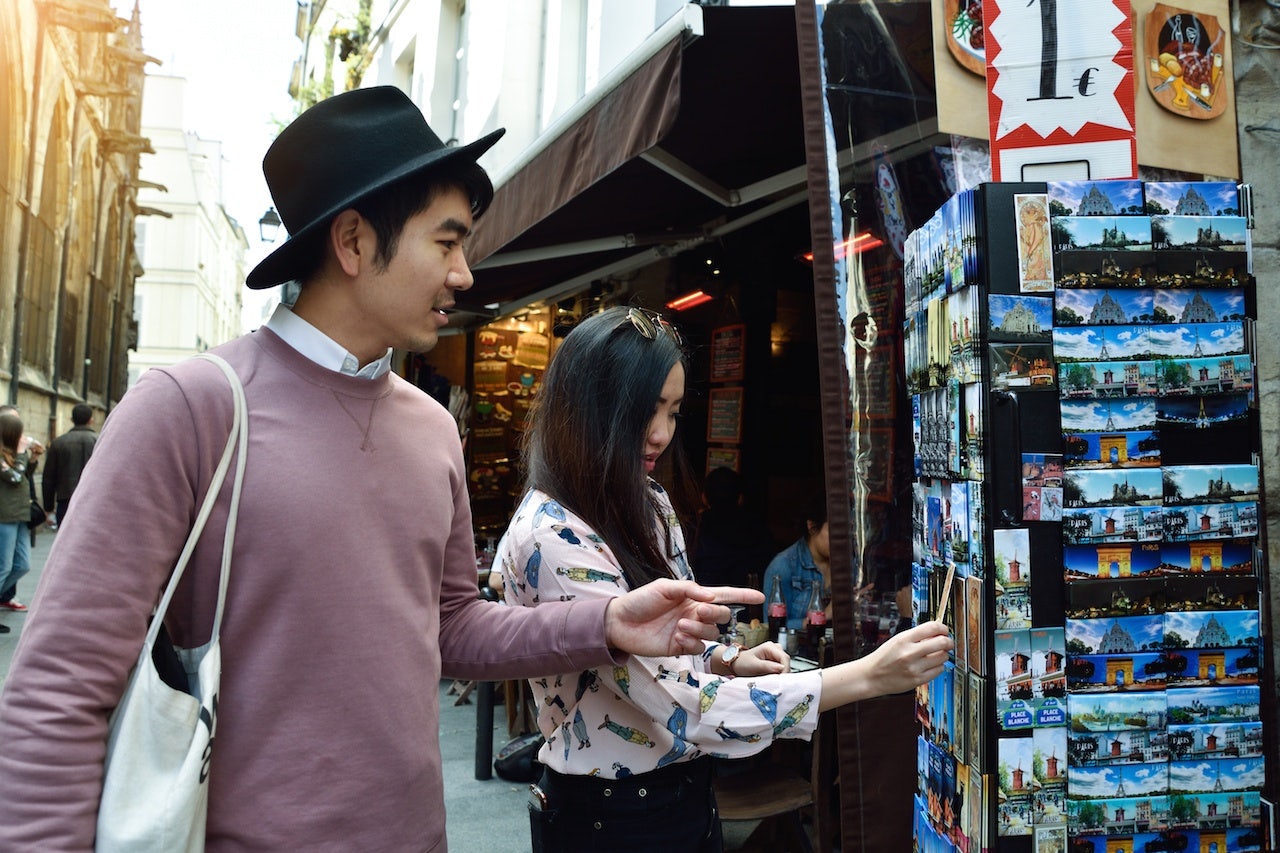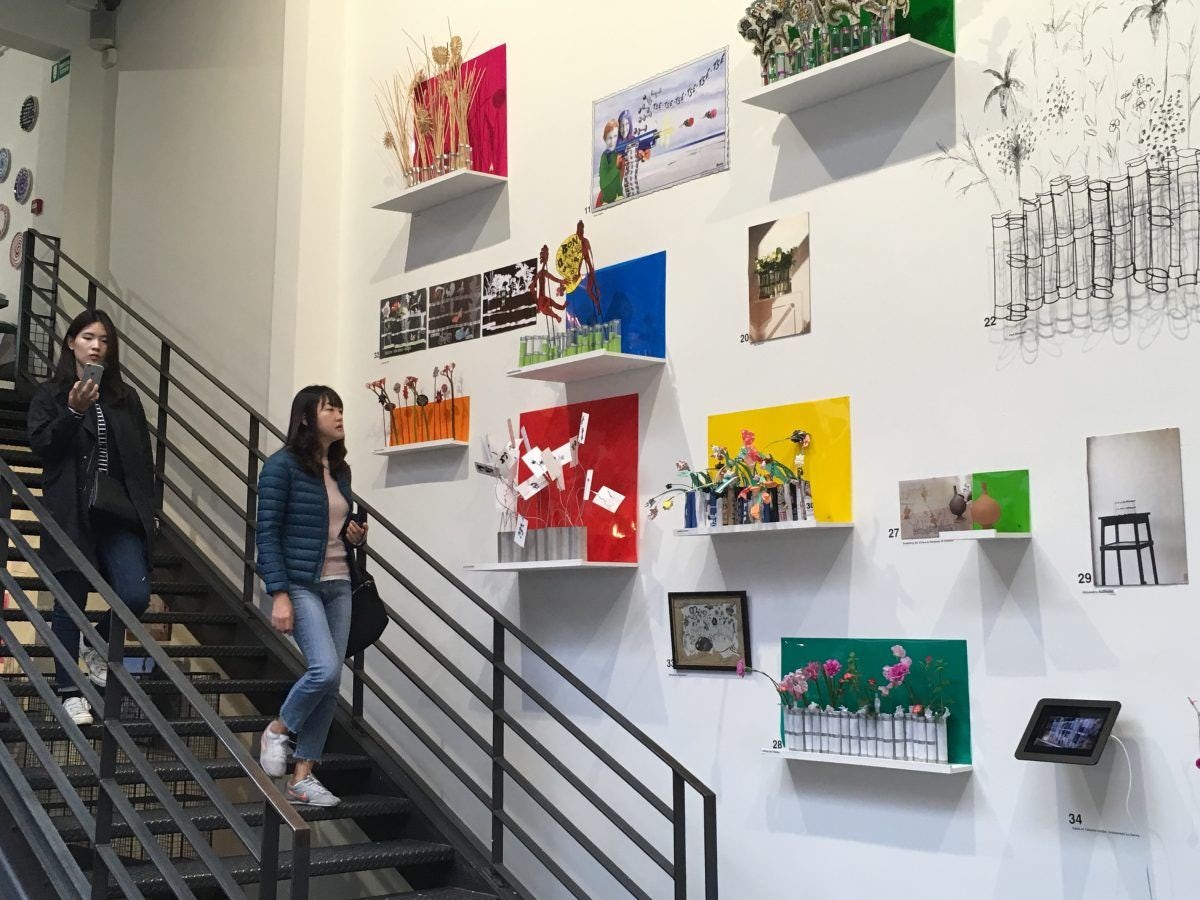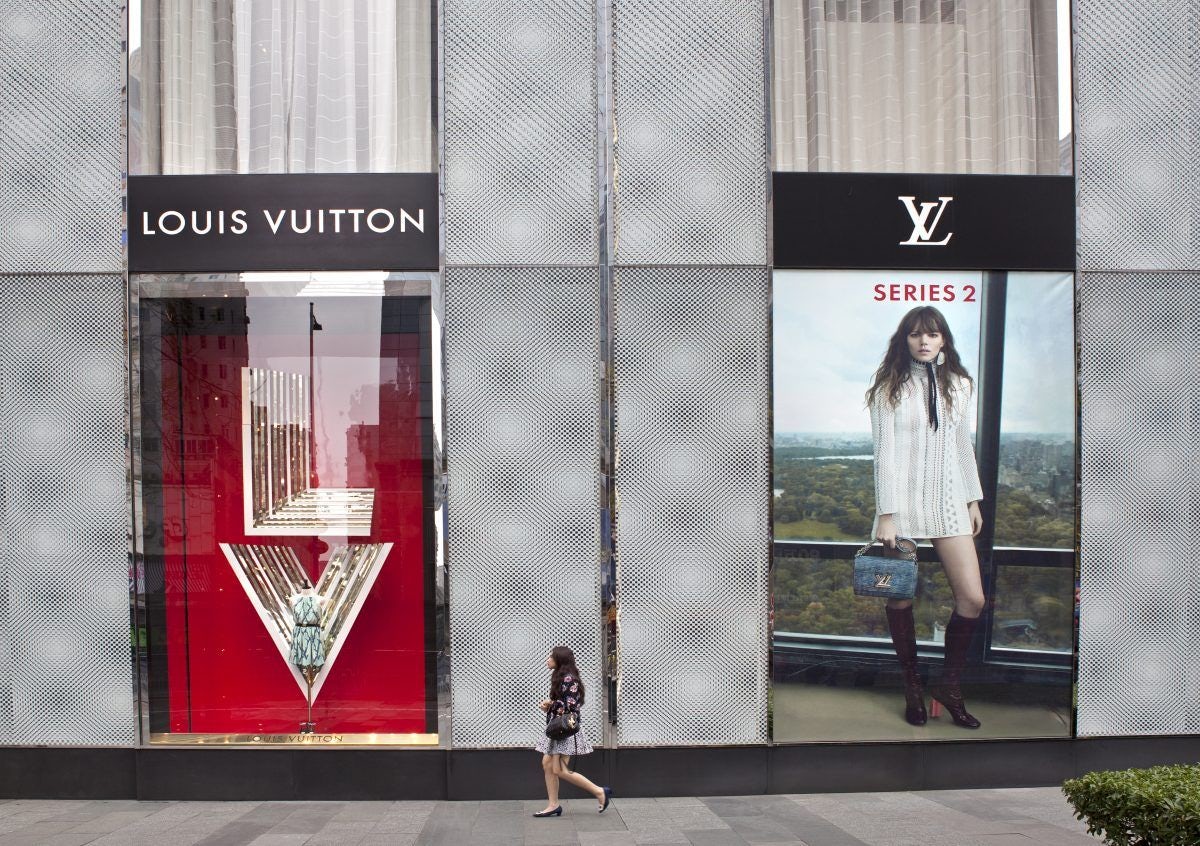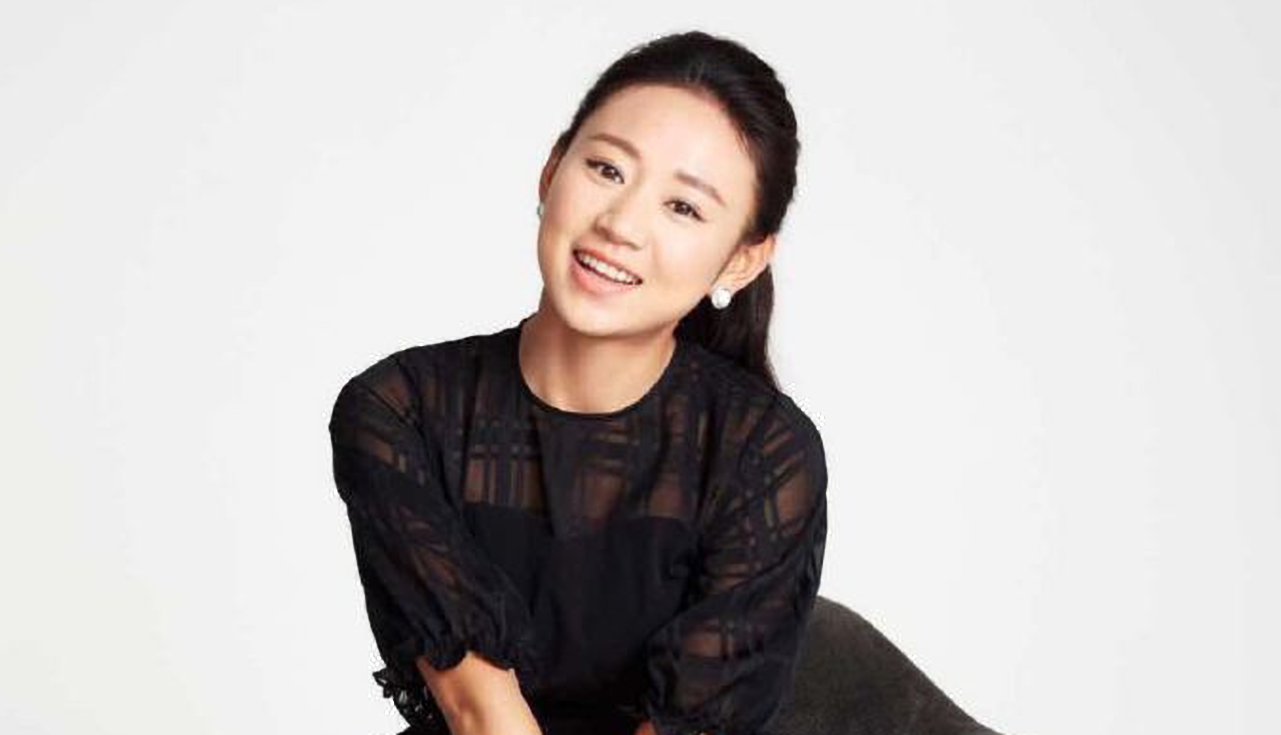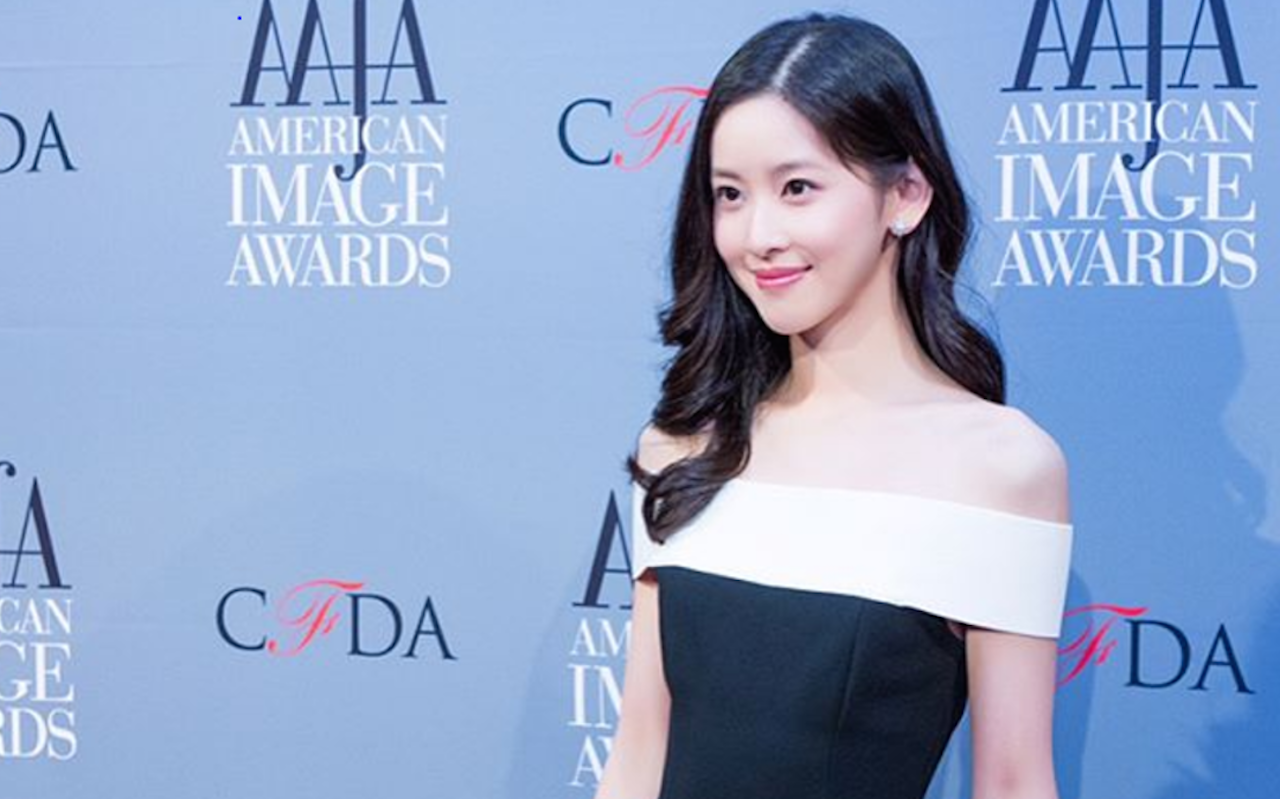Under a white canopy adjoining Louis Vuitton’s flagship on the Champs-Élysées, a conga line of Chinese girls wearing pretty sundresses and perky straw hats wait patiently to buy the handbag of their dreams.
They’re among the high-spending Chinese tourists who are visibly on the rebound in Paris after a disastrous year for the city’s retailers in 2016.
Following the terrorist attacks in November 2015, Chinese visitors to the fashion capital declined by 400,000 in 2016 and, as a consequence, the sought-after euros in their cash-filled purses were nowhere in sight.
But in a rapid about-face, between January and April this year, the arrival of 215,317 Chinese represented a 40.4 percent increase on the same period in 2016, according to new figures from the Paris Office of Tourism.
Spending an average 200 euros per person per day, the Paris region has profited from a bonus 785 million euros. But this ‘average’ spend does not reflect the overall picture which includes small, chic boutiques that are sought out by discerning Chinese shoppers and are often the winners.
“I sold 30 pieces of lingerie to a Chinese bride-to-be who wanted them for her summer wedding,” said Fifi Chachnil, who founded her eponymous, and quintessentially French, lingerie boutique, Atelier Fifi Chachnil, in 1996. It overflows with sexy and costly pieces in satins, silks and laces.
Chinese consumers in the world’s fashion capital spend more than those from any other country, with 37 percent of their budgets slated for shopping, 18 percent for food and gastronomy and a mere 3 percent for visiting museums and historic sites.
Analysts say the “new confidence” is the result of a successful charm offensive by the Paris tourist authorities, which along with the French government earmarked a combined 33 million euros to remind Chinese travelers that romance, shopping and gastronomy make France one of the most visited countries in the world. The message is driving increased sales of cosmetics, handbags and late night trips to nightclubs like the Lido.
A significant portion of this budget went to public service messages on Chinese social media accounts, which emphasized the increased police presence on streets that are popular with the Chinese. In the metro and in public buildings, messages in Chinese warn about pickpockets.
Concurrently, luxury groups responded with their own research, paying attention to the tastes and needs of tourists, with better service and an awareness of the need to employ shop assistants who speak Mandarin.
Chinese consumers visit Paris for the unique products they cannot buy at home, for the choice, authenticity and (tax-free) prices. “Paris waits for you…” reads the message on Paris Mayor Anne Hidalgo’s WeChat account. The painstaking campaigns are performing nicely.
Chinese demographics are also changing at a clip. New travelers are increasingly sophisticated and discerning and they seek out ‘experiential’ travel. Today, 40 percent of travelers to Paris are individuals, compared to 30 percent three years ago. In 2020, one in two tourists will travel solo, a nod to the rapid-fire rise of the ‘FIT’ (Free Independent Traveler).
With a population of 400 millennials in China, FITs are often well heeled, debt-free and living at home. Inside French boardrooms they’re spoken of in hushed tones—as the ‘7-pocket spenders.’ The phrase refers to children born under China’s one-child policy. These are children who are said to have more money for spending than Americans and Europeans of the same generation because they get money from their parents, two sets of grandparents, and their own savings.
These new visitors are seeking richer cultural or shopping experiences, and they are increasingly well-catered for as young companies emerge to satisfy their demands.
Stephanie Boutet-Fajol, the founder of Sacrebleu Paris, a travel service company specializing in young Chinese travelers offers exceptional, one-of-a-kind experiences that include things like private lessons making macarons in the kitchens of the Hotel Ritz.
For others who want to experience shopping in the small, chic, left-bank boutiques of Saint Germain, Diane Lepicard, founder of Paris Shopping Tour, welcomes Chinese clients with a translator, a chauffeur and, if her guests wish, a bistro lunch to complete the experience.
The core of tourists continue to descend on the centre of Paris, flocking to the ‘Opera’ district, from where they visit the legendary department store Galeries Lafayette.
That scene is now changing. In March this year, the retail group opened a new store and ‘welcome centre’ dedicated to Chinese tour groups. Located opposite the historic flagship on Boulevard Haussmann, it offers leather goods, cosmetics, accessories, jewelry and gifts with French flair.
In contrast to the busloads of tourists converging here, Lafayette’s, smaller sister department store, BHV Marais is poised to make a play for the younger FITs. The store’s new slogan; “The Parisians’ favourite department store” (they claim that 80 percent of their clients are French) contrasts with Galeries Lafayette’s customers, of which roughly 50 percent are foreign visitors.
While BHV Marais offers the services all Chinese can now expect in a department store, including a private welcome room for serious spenders, personal shopping and swift tax refunds, BHV Marais will add three “experiences.” Their Chinese-language ‘Walking tour of the Marais’ is intended to reinforce the store’s desired position as a cornerstone of the trendiest shopping quarter in the city.
This year, 24 percent of Chinese tourists in Europe will visit France—with Paris still occupying the top slot as for the ‘most popular destination.’ The fashion capital will assuredly be their kick-off destination. But increasingly, the South of France and the champagne region – just a little over an hour from the city – are featuring strongly on millennial itineraries.
Susan Owens is the founder and editor of Paris Chérie, a Paris-based fashion website dedicated to bringing French style news to Chinese readers.
